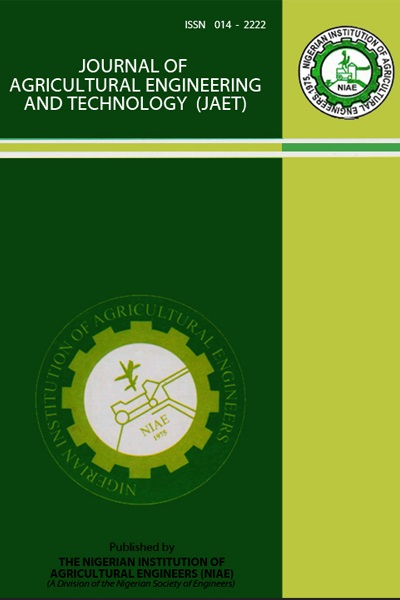MODELING AND OPTIMIZATION OF PROCESS CONDITIONS AND SOME NUTRITIONAL QUALITIES OF DRIED TOMATO USING RESPONSE SURFACE METHODOLOGY
Keywords:
Tomatoes, preservation, drying, temperature, time, qualityAbstract
Tomato fruits are seasonal and highly perishable due to high moisture content, thereby making the preservation difficult. Drying is one of the ways to preserve the nutritive qualities of the product. In this research, optimum temperature and time necessary for drying tomatoes using a response surface approach were studied. Central Composite Rotatable Design (2 × 5) was adopted. Drying temperatures and time selected were 50, 55, 60, 65 and 70oC; 16, 17, 18, 19 and 20 hr, respectively. The protein, fat, ash, carbohydrate and fibre contents as well as the calorific values of the dried tomatoes were determined. Four different models were used to analyze the nutritional qualities of the dried tomatoes and the models were fitted to the experimental data using Design Expert Software. Data analyses were done using multiple linear regression at p = 0.05. Predicted optimum conditions were validated using experimental values. It was observed that drying temperature and time affected the nutritional qualities of the samples. Protein content
ranged from 0.70-6.48%, fat content ranged from 2.50-9.50, ash content ranged from 9-17%, carbohydrate content ranged from 68.12-81.22, fibre content ranged from 0.50-1.50 and the calorific value ranged from 348.50-397.00 kCal. The predicted optimal values were 5.68% protein content, 7.62% fat content, 15.47% ash content, 72.61% carbohydrate content, 0.92 fibre content and 370.30 kCal calorific value at drying temperature of 55oC and drying time of 17 hrs with a desirability of 0.56. Under these optimal conditions, the experimental values were 5.36% of protein content, 7.50% fat content, 15.00% ash content, 71.14% carbohydrate content, 1.00% fibre content and 333.50 kCal calorific value. The deviations between experimental and predicted values were low and statistically insignificant which implies that the various models selected could actually predict the nutritional qualities of the dried tomatoes.


